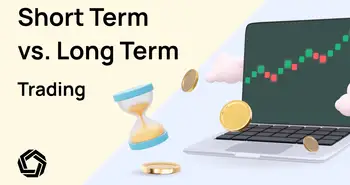How to Grow a Small Trading Account
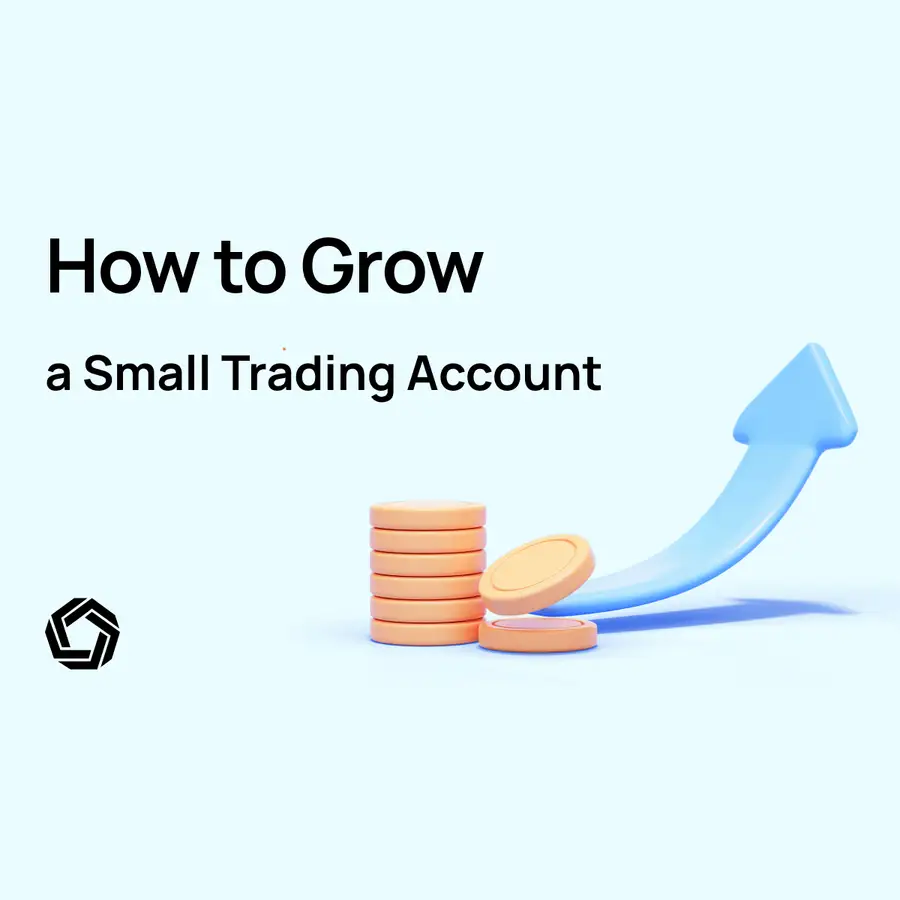
Trading is an art. And like any skill, consistency and discipline are necessary to become adept. Understanding the importance of consistency and the power of compound growth will aid every aspiring trader on their journey. Many traders dream of quitting their day job and living off trading profits but often face a different reality entirely.
Becoming a successful trader presents a vocation without end. It will cost traders financially, mentally, and physically. But for those who can stomach the losses, deal with the anxiety, accept the stress, and overcome their emotions, trading can make financial freedom a reality.
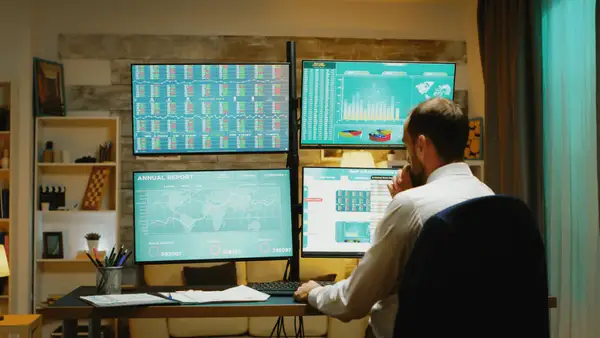
Education will always be the first priority, and following this, traders should aim to become profitable. Traders who follow these two simple steps will be amazed at the result of their implementation over more extended time frames.
This article pertains to the challenges of growing a small trading account. Basic rules for growing a trading account remain regardless of account size, the difference rests in degrees of proportion, but smaller accounts face several unique challenges.
The Challenges of Growing a Small Account
Smaller margins for error. Protecting capital should be the focus for traders, and users trading with a smaller account must operate more efficiently. For example, stop-loss orders must be placed more carefully.
Lack of flexibility. Larger trading accounts naturally possess more flexibility regarding risk management and capital.
The psychological aspect. The psychology underpinning growing a small account presents the greatest obstacle preventing people from growing their account size. The psychological aspect can be broadly split into two categories: patience and risk.
Patience. It takes time to grow a smaller account, and many traders do not have the mental fortitude to endure the process.
If a trader trading with a $200 account made a yearly 30% gain- an incredible feat- this would equate to $60. Many traders may consider the payoff in dollar terms not worth it for all the effort and time put in. These traders do not possess the patience to grow a smaller account consistently, and this lack of patience leads to the second pitfall faced by traders with small accounts, and that is risk.
Risk. In the modern era, everybody wants everything now, not later. The world rushes, and the instant-gratification formula has entered all facets of life. Less-capitalized traders often end up frustrated with their returns; they forget the principles of consistency and discipline and engage in more aggressive trading. They overtrade and hope to make it all back on a single trade. This typically marks the death of the account. As soon as impulsive risk-taking behavior enters a trader's mindset, they have already entered dangerous territory. And this becomes harder when facing consistent losses. Losses are a natural part of the trading cycle, but enduring losses with less capital naturally places a more significant psychological strain on the trader.
Strategy, Discipline, and Long-Term Thinking
“If you know the enemy and know yourself, you need not fear the result of a hundred battles. If you know yourself but not the enemy, for every victory gained you will also suffer a defeat. If you know neither the enemy nor yourself, you will succumb in every battle.”
Sun Tzu
Traders who plan set themselves up for success. Traders must have a trading strategy in place, follow this plan to the letter, and apply their method rigorously. If investors follow these steps, they avoid the pitfalls attached to trading with a small account, and long-term, the compounding effect of wins rests heavily in their favor.

Consistency and discipline will continuously outperform luck and aggressive trading over a long-term time horizon.
Set Realistic Expectations
Managing expectations presents another hurdle that all traders must traverse before they become successful. Specific to small accounts, thinking in terms of PnL (Profit and Loss) can help overcome the psychological issue of small victories.
Trading attracts people who want to make money fast. Any method for getting rich quickly typically has the inverse effect. Traders who meet their expectations and realize that trading represents a journey and not a mad dash will outperform their peers. The stock market has returned on average close to 10% over the past thirty years, less when inflation is factored in. Traders want to make more than 10% a year, or their money would be better in an S&P 500 tracker.
Trading is not a linear journey, and there will be setbacks. But hopefully, future wins will offset any losses sustained by traders. The core principle behind trading will always be the development of a strategy. In this sense, growing a small account is one of the best experience-led educational resources for any trader.
Traders who magically expect their account to triple in size overnight will be sorely disappointed.

Those who cannot measure their expectations are more prone to falling victim to excessive risk-taking behavior. An account's growth rate will depend on the trader and their goals, but as a rule of thumb, traders want to outperform the S&P 500; otherwise, as mentioned earlier, their money is better in a passive fund.
Traders who focus on honing their strategy, take a long-term horizon, and set realistic goals for account growth will always prevail over their more impulsive peers. Mentally preparing is a large part of the battle, and traders who set aside time and create realistic goals for account growth already have a leg up. Once traders begin to grasp the beauty of compounding and focus on the process, everything else will take care of itself.
The market will always be capricious. Traders operating in 2021 may have made better than expected returns, given vast quantities of cheap liquidity sloshing around the system. Traders operating in 2022 may have been surprised by galloping interest rates, artificial supply shocks, and sticky inflation. Market conditions exist in a state of flux, and investors would be wise to alter their expectations along with the market. In an ugly bear market protecting existing capital would be considered a win. In contrast, this would be a failure in a roaring bull market. Traders must be able to adjust to market conditions and bring their expectations in line.
Traders should be tracking their performance. Not only will this give them a better reading of how they are performing, but it also comes in handy during tax season. Many trading platforms provide this service, but a spreadsheet works just as well. A further tip for traders keen to grow would be the creation of a trading diary. Every time a trader enters a position, they should write a quick note as to why they entered the trade. Over time this will help them better understand their trading psyche.
Choose Your Trading Platform
Choosing a trading platform will be another vital step for traders looking to grow a small account. The first thing a trader needs to ask themselves is what assets they want to trade, which markets they wish to participate in, and what platform features they desire. The type of trader will also impact the platform choice; for example, day traders will have different requirements to swing traders.
For traders looking to grow a small account, fees will be another defining factor in their final decision.
The core criteria investors should look for when choosing a trading platform will be security, trading fees, platform features, and available assets. Trading and investment, more broadly, have become a different beast compared to even two decades ago, and traders are spoilt for choice when it comes to platforms.
For every trader, security will always be the principal factor in choosing a platform.
Traders should always do their due diligence before depositing; even a quick web search will often yield fruit. Another good tip is to check where the company is seated. If the broker has its main seat somewhere such as the Cayman Islands with looser financial scrutiny, what recourse would the trader have if something questionable happened?
Outside of security, for traders looking to grow a small account, the primary factors influencing the decision will be available assets and trading fees. What assets the trader wants to trade will depend entirely on them, but thanks to the growth of FinTech companies and surging popularity in trading. There is no shortage of quality options when selecting a trading platform.
A solid example is Morpher. The Morpher trading platform has pushed to eliminate industry middlemen who squeeze fees from clients for subpar service. Morpher offers a unique solution even in the hectic world of trading platforms.
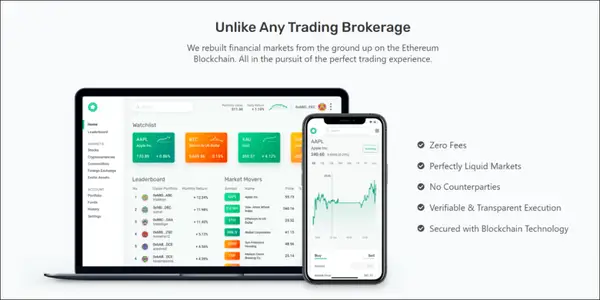
Morpher caters ideally to the needs of traders looking to trade actively, as it charges no fees and has no capital minimum requirement. Morpher supports leverage, a tool that will be vital for smaller accounts, and the most remarkable feature of Morpher is its flexibility. Morpher allows traders to access all markets around the clock, allows shorting, and can turn any data feed into a market. We encourage you to explore the amazing features on our platform for free and see for yourself how easy it is to trade global markets with very little restrictions.
Develop a Trading Plan
A trading plan defines the trader. It is the difference between making money and enriching a hedge-fund manager. Traders who make money routinely all follow a trading plan, those that do not magnify their chances of failure dramatically.
Those who plan will always outpace those who do not.
What is a Trading Plan?
In layman’s terms, a trading plan is a constitution followed by each trader. Every trader will have nuances in their style and risk tolerance. Therefore trading plans are as unique as the individuals who create them. Most importantly, trading plans grow in complexity as the trader learns.
Trading plans reduce lag; this is their core function. When a trader outlines their rules for entry and exit, defines their target asset and the type of strategy they will implement. When the market presents an opportunity, traders do not have to think; they act. Financial markets are open, and every trader competes against the rest of the world. Preparation presents an essential step and a considerable advantage for those who leverage it.
Traders without a plan fire from the hip, hoping to get lucky. Traders with a plan consistently implement their strategy. One loses money quickly; the other makes steady, consistent gains over time.
Elements of a Trading Plan
A good trading plan will contain a set of rules that align with the trader’s objectives. Key components include goals, timeframes, risk tolerance, and strategy.
It will detail risk management and entry and exit strategies on a more granular level.
Regarding entry and exit strategies. Traders should always have a reason to enter a trade. Perhaps they want to trade low-cap ‘fast growers’ to borrow a term from Peter Lynch. Or maybe a more simplified example would be a trader swing trading Bitcoin over a two-week time frame. Their entry strategy may be as simple as entering a trade when Bitcoin bounces from local support. Following this example, their exit strategy would be when Bitcoin reaches local resistance.
A trader makes no money until they exit the trade. Everyone has heard the age-worn advice buy low and sell high. Having a trading plan in place takes the emotion and psychology out of exiting and allows traders to execute. Human psychology can be a strange thing. When a trader is in a winning position, they may not want to exit, wanting the trade to continue running, only to be forced out at a lower price with an unexpected reversal. Exit strategies prevent this.
Before writing their trading plan, investors should paper trade with a demo account. Attempt to understand the type of trader they are and their skill level. Then begin crafting basic rules to implement on their demo account, see the success or failure of these rules and adjust as necessary until they have created a strategy that wins more than it loses. Sticking to a plan in the heat of the moment is tricky, and that is why traders who follow their procedures outperform those who do not.
Define Your Risk Management Rules
Risk management presents another core part of a trading plan. Traders looking to grow small accounts must familiarize themselves with risk management, and it can be broadly understood as controlling the exposure to losses. This means correct size, low leverage, and stop losses. Not every trade will be successful, and proper risk management ensures traders get to continue trading.
When growing a small account, a trader’s risk management and ability to protect their capital define the length of their endeavor. Growing a small account means developing as a trader, and skill sets will improve in line with the account balance. It is impossible to learn a new language in a single day, and the same applies to trading; traders looking to grow small accounts should take each day as it comes, focusing on taking one step forward. Those who leap will find no ground beneath them when it is time to land.
Risk-to-Reward. How much is the trader risking, and how much do they stand to gain? Traders should calculate their risk-to-reward ratio before entering a trade and understand the required win rate to be profitable. Low risk-to-reward ratios should be the staple for traders looking to grow small accounts.
Smaller accounts should only risk a small percentage of their account in a single trade. Progress will be slow, but traders will have already mentally prepared for this. Traders should always have stop losses in place as part of a risk management strategy. Stop losses prevent oversized losses on a single position when the market makes an unfavorable volatile move. A stop loss limits an investor’s exposure to risk by exiting the trade at a predefined price. They are a vital shield from irrationality that often causes traders to hold a losing stock believing in a turnaround. Cutting losses is just as crucial as taking winnings.
Build Consistency and Discipline
Discipline is a muscle; the more a trader exercises it, the more it will grow. Small, consistent steps drive change.
‘You do not rise to the level of your goals. You fall to the level of your systems.’
James Clear, Atomic Habits
Growing a small account will demand significant effort, and the slow progress causes many people to engage in high-risk behavior and lose everything. If it were easy, everyone would do it. Trading naturally weeds out irrational market participants and those who cannot stick to their strategies. Traders growing small accounts should focus on their trajectory instead of their daily returns.
If they can successfully grow a small account, they will already possess a profitable blueprint they can execute when they have grown their trading account to a more significant size. Discipline refers to doing the same thing repeatedly regardless of external circumstances such as emotion.
Traders who master their emotions and invariably apply their trading plan will grow as traders. Emotion and human psychology are the two greatest pitfalls for traders, encouraging the worst behaviors, such as holding losing positions and refusing to exit winning positions. It is impossible to describe the intensity of these emotions, and experience will provide the best guide. Everyone believes themselves capable of shutting out emotions until they are in the moment watching the price tick upwards violently, believing it will go on forever. Traders who cannot avoid emotional trading will end up burnt.
Review and Self Evaluation
All traders, specifically those looking to grow small accounts, must regularly review their performance and evaluate the findings. Traders with a trading diary and a detailed performance spreadsheet will find this far easier. The cycle of a successful trader follows three simple steps, practice, review, and update.
Traders must ascertain their trading plan's success and work on each component in a piecemeal fashion. Master entering positions, then rotate to exiting positions, adjust the sizing of trades, etcetera.
Practice must be focused and with purpose.
Final Thoughts on Growing a Small Trading Account
Growing a small trading account can seem a daunting task, and in truth, it is a daunting task. But for precisely this reason, it is worthy of admiration, and traders will learn about themselves and the markets undertaking this labor. Traders who frontload the work will enjoy higher rates of success.
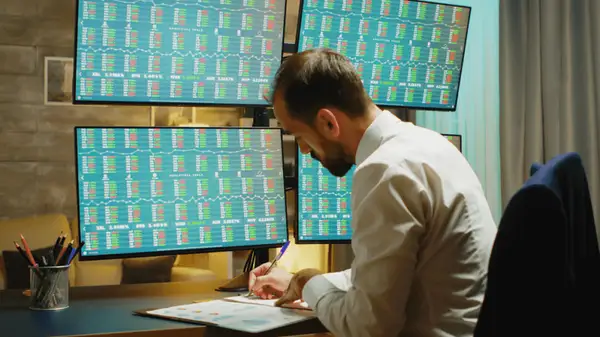
Traders who cannot allocate the time to sit down, draft a trading plan, apply it consistently, and understand their psychology should not attempt to trade. Their positions will become easy pickings for someone who has bothered to put the effort in.
The main focus for growing a small trading account will be trajectory and profitability. Traders who focus on these will find that capital naturally follows. Most of the challenges related to trading are psychological, and a small trading account compounds these pressures. It takes significant mental strength to overcome these challenges, but traders who can, they will have turned themselves into profitable market actors capable of competing on the global stage.
Two underrated tips for growing small accounts outside of mastering the basics and applying discipline are not to withdraw from the account-compound is a trader’s friend- and when it is possible, traders should add to their account. These two common sense tips can help snowball the size of a small trading account.**

Disclaimer: All investments involve risk, and the past performance of a security, industry, sector, market, financial product, trading strategy, or individual’s trading does not guarantee future results or returns. Investors are fully responsible for any investment decisions they make. Such decisions should be based solely on an evaluation of their financial circumstances, investment objectives, risk tolerance, and liquidity needs. This post does not constitute investment advice.

Painless trading for everyone
Hundreds of markets all in one place - Apple, Bitcoin, Gold, Watches, NFTs, Sneakers and so much more.

Painless trading for everyone
Hundreds of markets all in one place - Apple, Bitcoin, Gold, Watches, NFTs, Sneakers and so much more.





